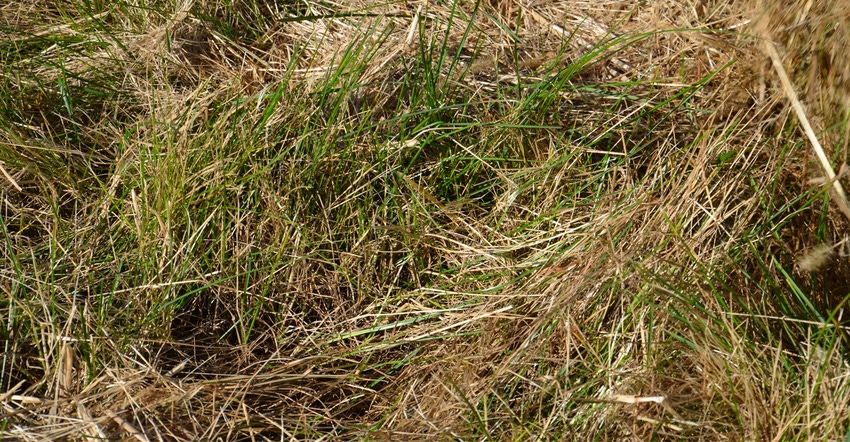February 7, 2017

A neighbor wanted me to examine his grass hay field to determine if the stand was good enough to leave, and how it should be managed in the future. It’s used primarily for hay, normally two cuttings per year. He was concerned because foxtail came in late last summer. It was so thick, he opted not to take the second cutting.
Foxtail showed up in many fields in August and September in 2016. It was a favorable year for foxtail.
I quickly determined there were plenty of grass plants, with a good variety of species. There was no need to reseed. However, the field had been in hay and pasture for 15 years and hadn’t been soil tested during that time. So I recommended testing.
Soil testing
My neighbor asked me to pull samples. There were mainly two soil types: a somewhat poorly drained soil and a lower, poorly drained soil. I broke the small field of under 10 acres into two sampling areas, and pulled 10 to 12 cores at random within each block. I mixed the cores together and pulled one sample for each block to send to the lab.
When the results arrived, the pH on the poorly drained soil was 6.4. Cation exchange capacity was 12.3. It takes longer to change pH levels — and conversely, more lime to correct low pH levels — on soils with higher CEC. However, this pH level is adequate for this use. The pH on the other section was even higher, at 6.9. I don’t worry about pH in hay or pasture, unless it’s alfalfa, until the pH is 6.0 or less.
Phosphorus was 88 pounds per acre on the heaviest soil, and 36 pounds per acre on the somewhat poorly drained soil. The 88-pound level is high, and the 36-pound level is borderline low but still in the medium range, according to the Tri-State Fertilizer Recommendations. Potassium levels were 292 pounds per acre for the heavier soil and 244 pounds for the other soil. Both are adequate.
Recommendations
No lime is needed. Since P and K are both at fairly acceptable levels, I would fertilizer to maximize yield and maintain soil test levels. I recommended 300 pounds per acre of triple 19 (19-19-19), which provides 57 pounds of N, P and K the first year.
Ideally, it ought to be spread in April, if weather conditions are fit. Since the soils are wetter, that may be difficult. If necessary, it could be spread after the first cutting in late May.
I would follow with 100 pounds of actual urea per acre in the spring the second year, providing 45 pounds of N. Based on current levels, applying 300 pounds of triple 19 every other year and urea on the off year would be a good plan. I suggested soil testing in three years to confirm the plan is working.
Parker is a hay and livestock producer. He writes from Morgantown.
About the Author(s)
You May Also Like




